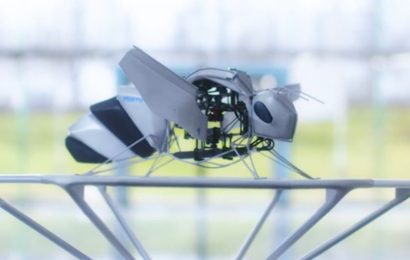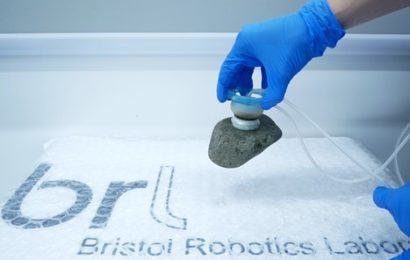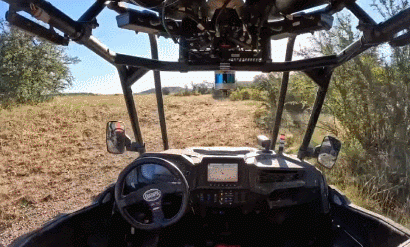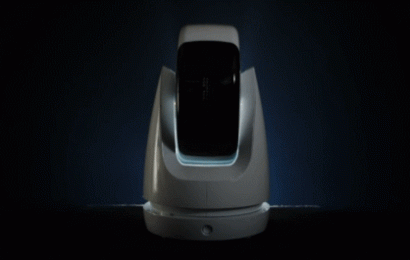Humanoid Robots Are Getting to Work
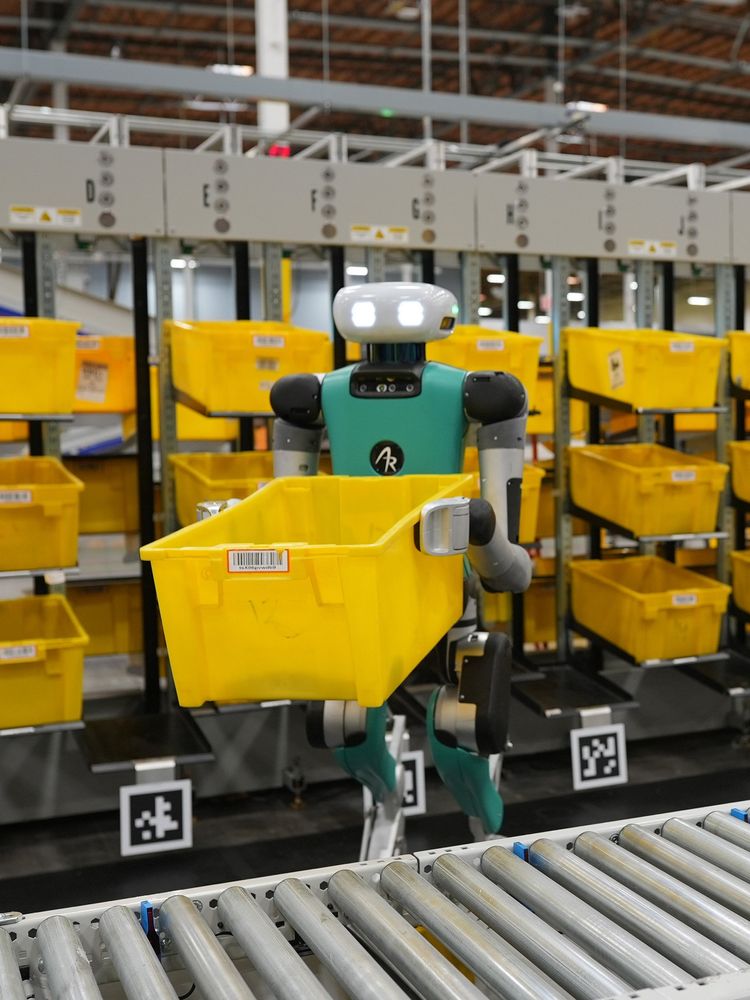
Ten years ago, at the DARPA Robotics Challenge (DRC) Trial event near Miami, I watched the most advanced humanoid robots ever built struggle their way through a scenario inspired by the Fukushima nuclear disaster. A team of experienced engineers controlled each robot, and overhead safety tethers kept them from falling over. The robots had to demonstrate mobility, sensing, and manipulation—which, with painful slowness, they did.
These robots were clearly research projects, but DARPA has a history of catalyzing technology with a long-term view. The DARPA Grand and Urban Challenges for autonomous vehicles, in 2005 and 2007, formed the foundation for today’s autonomous taxis. So, after DRC ended in 2015 with several of the robots successfully completing the entire final scenario, the obvious question was: When would humanoid robots make the transition from research project to a commercial product?
The answer seems to be 2024, when a handful of well-funded companies will be deploying their robots in commercial pilot projects to figure out whether humanoids are really ready to get to work.
One of the robots that
made an appearance at the DRC Finals in 2015 was called ATRIAS, developed by Jonathan Hurst at the Oregon State University Dynamic Robotics Laboratory. In 2015, Hurst cofounded Agility Robotics to turn ATRIAS into a human-centric, multipurpose, and practical robot called Digit. Approximately the same size as a human, Digit stands 1.75 meters tall (about 5 feet, 8 inches), weighs 65 kilograms (about 140 pounds), and can lift 16 kg (about 35 pounds). Agility is now preparing to produce a commercial version of Digit at massive scale, and the company sees its first opportunity in the logistics industry, where it will start doing some of the jobs where humans are essentially acting like robots already.
Are humanoid robots useful?
“We spent a long time working with potential customers to find a use case where our technology can provide real value, while also being scalable and profitable,” Hurst says. “For us, right now, that use case is moving e-commerce totes.” Totes are standardized containers that warehouses use to store and transport items. As items enter or leave the warehouse, empty totes need to be continuously moved from place to place. It’s a vital job, and even in highly automated warehouses, much of that job is done by humans.
Agility says that in the United States, there are currently several million people working at tote-handling tasks, and
logistics companies are having trouble keeping positions filled, because in some markets there are simply not enough workers available. Furthermore, the work tends to be dull, repetitive, and stressful on the body. “The people doing these jobs are basically doing robotic jobs,” says Hurst, and Agility argues that these people would be much better off doing work that’s more suited to their strengths. “What we’re going to have is a shifting of the human workforce into a more supervisory role,” explains Damion Shelton, Agility Robotics’ CEO. “We’re trying to build something that works with people,” Hurst adds. “We want humans for their judgment, creativity, and decision-making, using our robots as tools to do their jobs faster and more efficiently.”
For Digit to be an effective warehouse tool, it has to be capable, reliable, safe, and financially sustainable for both Agility and its customers. Agility is confident that all of this is possible, citing Digit’s potential relative to the cost and performance of human workers. “What we’re encouraging people to think about,” says Shelton, “is how much they could be saving per hour by being able to allocate their human capital elsewhere in the building.” Shelton estimates that a typical large logistics company spends at least US $30 per employee-hour for labor, including benefits and overhead. The employee, of course, receives much less than that.
Agility is not yet ready to provide pricing information for Digit, but we’re told that it will cost less than $250,000 per unit. Even at that price, if Digit is able to achieve Agility’s goal of minimum 20,000 working hours (five years of two shifts of work per day), that brings the hourly rate of the robot to $12.50. A service contract would likely add a few dollars per hour to that. “You compare that against human labor doing the same task,” Shelton says, “and as long as it’s apples to apples in terms of the rate that the robot is working versus the rate that the human is working, you can decide whether it makes more sense to have the person or the robot.”
Agility’s robot won’t be able to match the general capability of a human, but that’s not the company’s goal. “Digit won’t be doing everything that a person can do,” says Hurst. “It’ll just be doing that one process-automated task,” like moving empty totes. In these tasks, Digit is able to keep up with (and in fact slightly exceed) the speed of the average human worker, when you consider that the robot doesn’t have to accommodate the needs of a frail human body.
Amazon’s experiments with warehouse robots
The first company to put Digit to the test is Amazon. In 2022, Amazon invested in Agility as part of its
Industrial Innovation Fund, and late last year Amazon started testing Digit at its robotics research and development site near Seattle, Wash. Digit will not be lonely at Amazon—the company currently has more than 750,000 robots deployed across its warehouses, including legacy systems that operate in closed-off areas as well as more modern robots that have the necessary autonomy to work more collaboratively with people. These newer robots include autonomous mobile robotic bases like Proteus, which can move carts around warehouses, as well as stationary robot arms like Sparrow and Cardinal, which can handle inventory or customer orders in structured environments. But a robot with legs will be something new.
“What’s interesting about Digit is because of its bipedal nature, it can fit in spaces a little bit differently,” says Emily Vetterick, director of engineering at
Amazon Global Robotics, who is overseeing Digit’s testing. “We’re excited to be at this point with Digit where we can start testing it, because we’re going to learn where the technology makes sense.”
Where two legs make sense has been an ongoing question in robotics for decades. Obviously, in a world designed primarily for humans, a robot with a humanoid form factor would be ideal. But balancing dynamically on two legs is still difficult for robots, especially when those robots are carrying heavy objects and are expected to work at a human pace for tens of thousands of hours. When is it worthwhile to use a bipedal robot instead of something simpler?
“The people doing these jobs are basically doing robotic jobs.”—Jonathan Hurst, Agility Robotics
“The use case for Digit that I’m really excited about is empty tote recycling,” Vetterick says. “We already automate this task in a lot of our warehouses with a conveyor, a very traditional automation solution, and we wouldn’t want a robot in a place where a conveyor works. But a conveyor has a specific footprint, and it’s conducive to certain types of spaces. When we start to get away from those spaces, that’s where robots start to have a functional need to exist.”
The need for a robot doesn’t always translate into the need for a robot with legs, however, and a company like Amazon has the resources to build its warehouses to support whatever form of robotics or automation it needs. Its newer warehouses are indeed built that way, with flat floors, wide aisles, and other environmental considerations that are particularly friendly to robots with wheels.
“The building types that we’re thinking about [for Digit] aren’t our new-generation buildings. They’re older-generation buildings, where we can’t put in traditional automation solutions because there just isn’t the space for them,” says Vetterick. She describes the organized chaos of some of these older buildings as including narrower aisles with roof supports in the middle of them, and areas where pallets, cardboard, electrical cord covers, and ergonomics mats create uneven floors. “Our buildings are easy for people to navigate,” Vetterick continues. “But even small obstructions become barriers that a wheeled robot might struggle with, and where a walking robot might not.” Fundamentally, that’s the advantage bipedal robots offer relative to other form factors: They can quickly and easily fit into spaces and workflows designed for humans. Or at least, that’s the goal.
Vetterick emphasizes that the Seattle R&D site deployment is only a very small initial test of Digit’s capabilities. Having the robot move totes from a shelf to a conveyor across a flat, empty floor is not reflective of the use case that Amazon ultimately would like to explore. Amazon is not even sure that Digit will turn out to be the best tool for this particular job, and for a company so focused on efficiency, only the best solution to a specific problem will find a permanent home as part of its workflow. “Amazon isn’t interested in a general-purpose robot,” Vetterick explains. “We are always focused on what problem we’re trying to solve. I wouldn’t want to suggest that Digit is the only way to solve this type of problem. It’s one potential way that we’re interested in experimenting with.”
The idea of a general-purpose humanoid robot that can assist people with whatever tasks they may need is certainly appealing, but as Amazon makes clear, the first step for companies like Agility is to find enough value performing a single task (or perhaps a few different tasks) to achieve sustainable growth. Agility believes that Digit will be able to scale its business by solving Amazon’s empty tote-recycling problem, and the company is confident enough that it’s preparing to open a
factory in Salem, Ore. At peak production the plant will eventually be capable of manufacturing 10,000 Digit robots per year.
A menagerie of humanoids
Agility is not alone in its goal to commercially deploy bipedal robots in 2024. At least seven other companies are also working toward this goal, with hundreds of millions of dollars of funding backing them.
1X, Apptronik, Figure, Sanctuary, Tesla, and Unitree all have commercial humanoid robot prototypes.
Despite an influx of money and talent into commercial humanoid robot development over the past two years, there have been no recent fundamental technological breakthroughs that will substantially aid these robots’ development. Sensors and computers are capable enough, but actuators remain complex and expensive, and batteries struggle to power bipedal robots for the length of a work shift.
There are other challenges as well, including creating a robot that’s manufacturable with a resilient supply chain and developing the service infrastructure to support a commercial deployment at scale. The biggest challenge by far is software. It’s not enough to simply build a robot that can do a job—that robot has to do the job with the kind of safety, reliability, and efficiency that will make it desirable as more than an experiment.
There’s no question that Agility Robotics and the other companies developing commercial humanoids have impressive technology, a compelling narrative, and an enormous amount of potential. Whether that potential will translate into humanoid robots in the workplace now rests with companies like Amazon, who seem cautiously optimistic. It would be a fundamental shift in how repetitive labor is done. And now, all the robots have to do is deliver.
This article appears in the January 2024 print issue as “Year of the Humanoid.”


